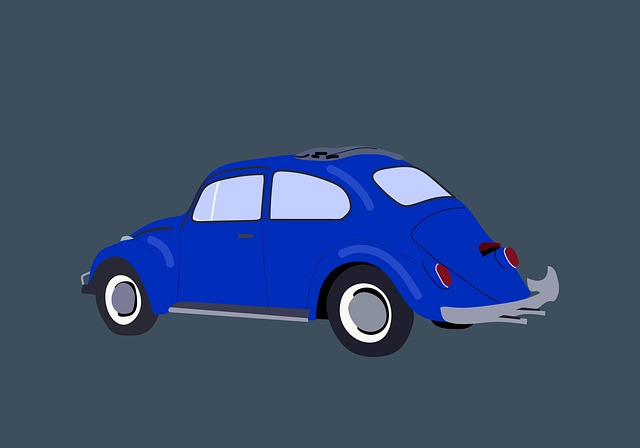The Airaid intake system is a popular choice among car enthusiasts seeking improved performance and fuel efficiency. It optimizes air intake, leading to better combustion and increased horsepower. There are two main types: cold air intakes (CAI) for cool, dense outside air, and dry filter systems that upgrade the stock air filter. Airaid's comparison guide aids users in choosing based on goals and budget. Installation requires careful preparation, tool gathering, component connection, and proper sealing to avoid leaks. Testing ensures seamless integration enhancing airflow and potentially increasing horsepower. Airaid stands out for its performance emphasis, customizability, and benefits in high-performance vehicles, but involves increased maintenance and complex installation. Well-installed systems offer substantial performance gains and improved driving experience.
“Unleash your vehicle’s performance potential with a comprehensive look at Airaid intake systems—a popular choice among car enthusiasts. This detailed guide offers an in-depth exploration of these powerful modifications, catering to both beginners and seasoned mechanics. We dissect the step-by-step installation processes for various Airaid systems, highlighting their unique advantages and considerations. Discover how these upgrades enhance engine efficiency and power delivery, making your ride a true force on the roads. This complete comparison guide is your ultimate resource for understanding Airaid intake systems.”
- Understanding Airaid Intake Systems: An Overview
- Step-by-Step Installation Processes Compared
- Advantages and Considerations for Each System
Understanding Airaid Intake Systems: An Overview

The Airaid intake system is a popular choice among car enthusiasts looking to enhance their vehicle’s performance and fuel efficiency. These systems are designed to optimize air intake, allowing for better combustion and increased horsepower. When comparing Airaid intake systems, it’s essential to understand that they fall into two main categories: cold air intakes (CAI) and dry filter systems.
Cold air intakes route cool, dense air from outside the engine compartment directly into the engine, bypassing the stock air filter housing. This provides a richer air-fuel mixture, resulting in improved power and torque. In contrast, dry filter systems upgrade the stock air filter by using a more efficient, high-flow filter that retains minimal moisture. They offer enhanced performance gains without drastically changing the intake route, making them a straightforward, cost-effective upgrade option. Airaid’s comprehensive comparison guide helps users navigate these options, ensuring they make an informed decision based on their specific performance goals and budget.
Step-by-Step Installation Processes Compared

When comparing Airaid intake systems, understanding their step-by-step installation processes is crucial for users looking to enhance their vehicle’s performance. The process can vary significantly between different brands and models, so a comprehensive guide is essential. Typically, the initial steps involve preparing the vehicle by locating the optimal mounting location and gathering all necessary tools. This often includes disassembling existing parts to make way for the new intake system.
The core installation phase then commences, which entails connecting the air filter, piping, and other components in a precise, step-by-step manner. Some Airaid systems might require modifications to ensure a secure fit, while others offer straightforward, plug-and-play setups. Proper sealing is paramount to prevent leaks that could compromise engine performance. The final steps involve testing the system for any issues and ensuring it operates seamlessly with the vehicle’s existing components, ultimately enhancing airflow and potentially boosting horsepower.
Advantages and Considerations for Each System

When comparing Airaid intake systems, understanding their advantages and considerations is key to making an informed decision. One notable benefit of Airaid is its focus on enhanced performance and efficiency. These systems are designed to optimize air intake, resulting in improved engine power and fuel efficiency, especially for high-performance vehicles. They often come with a range of customizable options, allowing users to fine-tune their system to match specific driving styles or vehicle modifications.
However, there are also some factors to keep in mind. Airaid intakes may require more maintenance compared to stock systems, as they often involve additional components and complex designs. Installation can be another consideration; while many Airaid kits come with detailed instructions, the process might be more intricate than installing a standard intake, especially for those without prior automotive modification experience. Nonetheless, a well-installed Airaid system can offer significant performance gains and a smoother driving experience.
When it comes to enhancing engine performance, a Airaid intake system offers a straightforward yet powerful solution. Our comprehensive guide has compared three distinct installation processes, highlighting their advantages and considerations. Whether you’re an experienced mechanic or a DIY enthusiast, this Airaid intake system comparison guide ensures you make an informed decision tailored to your needs. By understanding the unique benefits of each system, you can unlock optimal engine performance and enjoy a more responsive driving experience.














